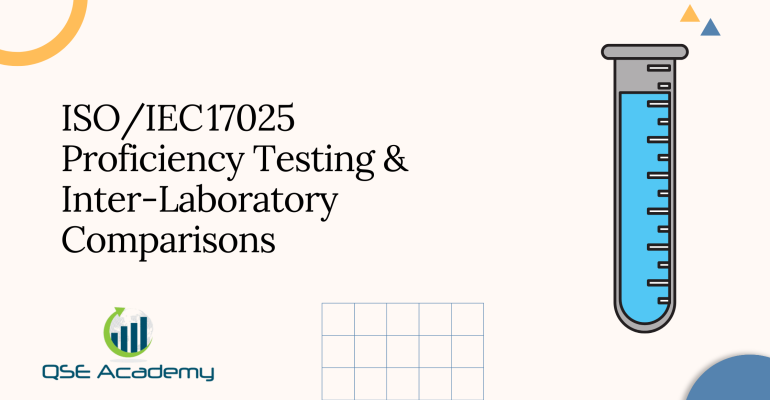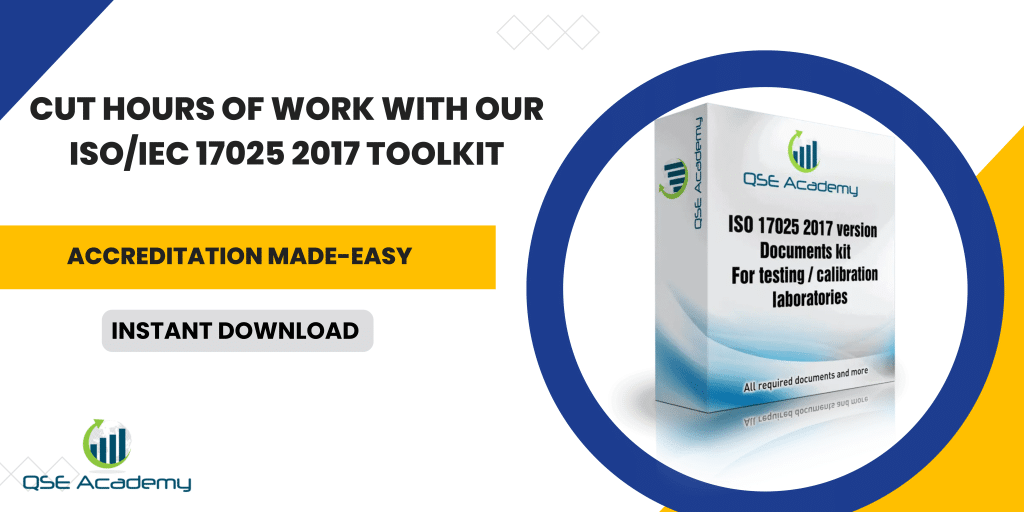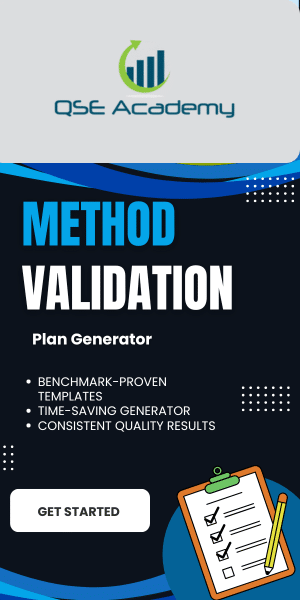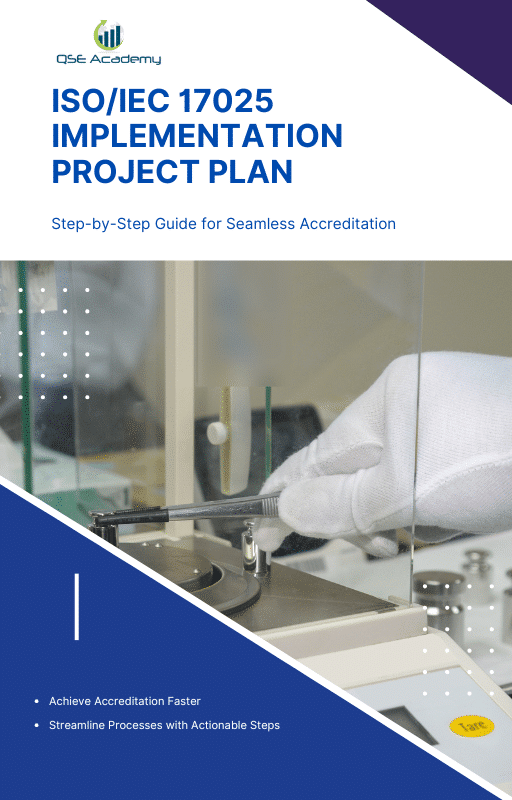ISO/IEC 17025 Proficiency Testing & Inter‑Laboratory Comparisons
Last Updated on October 13, 2025 by Melissa Lazaro
Why Proficiency Testing Is the Real Proof of Competence
Here’s something I tell every lab preparing for ISO/IEC 17025 accreditation: you can have flawless SOPs, calibrated equipment, and beautifully written manuals — but if you can’t prove your results are reliable, your system is only halfway there.
That’s where Proficiency Testing (PT) and Inter-Laboratory Comparisons (ILC) come in.
They’re not just another compliance box to tick — they’re the proof of truth behind your measurements. PT and ILCs show, with real data, that your lab’s results line up with others performing the same tests. It’s how accreditation bodies and clients know they can trust your numbers.
In short, PT and ILCs are your credibility check.
I’ve seen strong labs turn assessors’ heads because they didn’t just participate — they understood their results, acted on them, and improved because of them. That’s what this guide is about: how to participate meaningfully, interpret your data correctly, and use every round of testing to make your lab stronger.
By the end, you’ll see PT and ILCs not as obligations, but as one of the best quality tools your lab can have.
Understanding Proficiency Testing and Inter-Laboratory Comparisons
Before we dive into strategy, let’s clear up what these terms actually mean — because I’ve seen even experienced lab teams mix them up.
What Proficiency Testing (PT) Really Is
Proficiency Testing is essentially a performance check for your lab.
An external provider sends you a sample with an unknown value. You test or calibrate it using your usual methods — no shortcuts, no “extra care” — and submit your results.
Then, those results are compared against either:
-
A known reference value, or
-
Results from other laboratories performing the same test.
The outcome shows how close (or far) your lab’s result is from the accepted standard. It’s an objective measure of accuracy.
In simple terms: PT answers the question, “If five other labs tested the same thing, would our result match theirs?”
What Inter-Laboratory Comparisons (ILCs) Mean
ILCs are a broader concept. They include any organized activity that compares test or calibration results across multiple labs — whether managed externally or by your own organization.
Think of PT as a formal, structured evaluation and ILCs as a flexible, collaborative version. Both serve the same purpose: verifying that your lab’s data is credible and comparable.
Example:
A group of regional food-testing labs might exchange identical samples of bottled water to verify heavy-metal testing accuracy. That’s an ILC — and it counts toward ISO/IEC 17025 Clause 7.7 requirements when properly documented.
What ISO/IEC 17025 Says About It (Clause 7.7)
Clause 7.7 of ISO/IEC 17025 requires laboratories to:
-
Monitor the validity of results.
-
Participate in inter-laboratory comparisons or proficiency testing whenever possible.
-
Take corrective action when results are unsatisfactory.
It’s not just a recommendation — it’s a way of continually demonstrating technical competence.
Pro Tip: Assessors love to see that your PT/ILC program isn’t random — but planned, justified, and linked to your scope of accreditation.
Why Participation Matters – The Accreditation Perspective
Here’s the thing: proficiency testing (PT) and inter-laboratory comparisons (ILCs) aren’t just formalities. They’re how accreditation bodies measure confidence — not in your paperwork, but in your actual results.
You could have every calibration certificate in place, every SOP signed off, and still fail to convince an assessor if your PT data tells a different story.
Let’s unpack why participation matters so much — and what assessors are really looking for.
PT & ILCs Prove More Than Accuracy — They Prove Competence
ISO/IEC 17025 is built on one big idea: competence demonstrated through evidence.
And there’s no stronger evidence than showing your lab’s results align with those from other accredited labs.
PT and ILC participation demonstrates that your:
-
Methods work under real-world conditions.
-
Staff are competent and consistent.
-
Equipment and calibration chain produce traceable, reliable data.
In other words, PTs and ILCs are your lab’s external validation — your “report card” for technical performance.
Accreditation Bodies Use PT Data as a Confidence Indicator
During assessments, accreditation bodies look beyond participation certificates. They review:
-
How often your lab joins PT/ILC programs.
-
Whether results were satisfactory or unsatisfactory.
-
How you handled any outliers or poor scores.
If you can show that your lab analyzed results, investigated anomalies, and implemented improvements, you’re telling assessors,
“We don’t just pass PT — we learn from it.”
That’s the difference between compliance and competence.
Poor PT Results Aren’t the End of the World — Inaction Is
A poor result doesn’t automatically trigger a nonconformity. What raises red flags is when a lab does nothing about it.
Assessors know PT issues happen — what matters is your response:
-
Did you perform a root-cause analysis?
-
Did you verify corrective actions?
-
Did you include results in your management review?
Show them that process, and you’ll earn respect, even if the result wasn’t perfect.
Pro Tip: Assessors Look for a Story
Don’t just hand over PT certificates. Tell the story behind them:
-
“We participated in three PT schemes this year. One had a deviation, which led to a training refresher and method adjustment. Our next round showed a perfect z-score.”
That’s how you turn data into evidence of improvement.
How to Select the Right PT or ILC Scheme for Your Laboratory
Choosing the right proficiency testing (PT) or inter-laboratory comparison (ILC) program isn’t just about ticking a box. It’s about finding a program that truly reflects your lab’s scope, capability, and risks.
I’ve seen too many labs join the wrong PT schemes — irrelevant sample types, unrealistic concentrations, or unaccredited providers — and still wonder why assessors didn’t accept their results. Let’s make sure you don’t fall into that trap.
1. Match the Scheme to Your Scope
Start with your scope of accreditation.
Ask:
-
Does this PT or ILC cover the same parameter, matrix, and method that appear in our scope?
-
Are the samples realistic to what we test for clients?
Example:
If you’re accredited for pH measurement in drinking water, don’t join a PT for pH in wastewater sludge. It’s not equivalent — and an assessor will notice.
Pro Tip: Make a table mapping your accredited tests to available PT/ILC programs. It becomes your evidence of thoughtful planning.
2. Check Provider Competence (ISO/IEC 17043 Accreditation)
Your PT provider should be accredited under ISO/IEC 17043, the standard that governs proficiency testing.
This ensures that the samples, evaluation methods, and assigned values are statistically sound.
Ask for their scope of accreditation certificate and verify that it covers the parameters you’re testing.
If no accredited provider exists for your area, document your search and justify your alternative — such as organizing an internal or regional ILC.
3. Evaluate Frequency and Relevance
Most accreditation bodies expect PT participation at least once per accreditation cycle, but for high-risk or high-volume tests, annual participation is ideal.
If a scheme offers multiple rounds, plan participation strategically:
-
Rotate methods or parameters each year.
-
Focus on tests that have higher measurement uncertainty or client impact.
Example:
A calibration lab alternates between torque and pressure PTs each year to cover its full scope over time — smart, balanced, and cost-effective.
4. Assess the Practical Fit
A PT scheme should mirror your normal operations.
Look for:
-
Sample matrices similar to what you handle.
-
Concentration ranges that fit your typical workload.
-
Data submission formats that make sense for your methods.
Avoid schemes that require unrealistic handling or equipment beyond your normal process — it defeats the purpose of “testing your everyday performance.”
5. Document Your Selection Process
Assessors often ask:
“How did you decide which PT or ILC to participate in?”
Have a clear answer ready.
Keep a PT/ILC Participation Plan that shows:
-
Which tests you participate in.
-
The provider’s details and accreditation status.
-
Planned frequency and rationale for any gaps.
Pro Tip: When there’s no formal PT scheme, document your collaboration with peer labs. Include sample exchange records, results, and statistical summaries — it’s just as valid when justified correctly.
The Proficiency Testing Process – Step-by-Step
Once you’ve chosen the right program, the real test begins — and it’s not just about the samples you analyze. It’s about how well your lab follows its own procedures under normal conditions.
I’ve seen labs treat PT rounds like final exams — extra careful handling, double-checking everything, rerunning results until they look “perfect.”
That’s a mistake. Assessors can tell.
The goal of proficiency testing is to evaluate routine performance, not polished perfection.
So here’s how to approach it step-by-step — confidently, honestly, and effectively.
Step 1: Register and Plan Ahead
Once you’ve selected a PT/ILC scheme, register early and mark participation dates in your quality calendar.
Coordinate with your technical staff to ensure availability, reagents, and instrument readiness.
Pro Tip: Keep your registration forms, provider emails, and invoices — assessors often request proof of participation from start to finish.
Step 2: Handle Samples Like Client Samples
When PT samples arrive, resist the urge to give them “special treatment.”
Follow the same process you’d use for any routine work: same instruments, same staff, same methods.
Why? Because the goal is to validate your normal system — not your best-case scenario.
Common Pitfall: Running PT samples repeatedly until you get the “best” result.
If you wouldn’t do that for a customer, don’t do it for PT.
Step 3: Perform the Analysis or Calibration
Use your approved and validated methods exactly as written.
Document everything: reagent batches, calibration status of equipment, environmental conditions, operator initials.
If a deviation happens — for instance, you used an alternate instrument due to breakdown — document it clearly. Transparency beats cover-ups every time.
Step 4: Submit Data Correctly and On Time
Most PT schemes have strict reporting formats and deadlines.
Double-check that your results, units, and uncertainty values are entered correctly before submission.
Pro Tip: Have a second person review your data sheet before sending it — not to alter results, but to verify accuracy in transcription and units.
Late or incorrectly formatted submissions are one of the most common administrative nonconformities in PT participation.
Step 5: Review the Evaluation Report
Once you receive your PT results, take the time to interpret them carefully.
Providers typically present performance using z-scores (for testing labs) or En values (for calibration labs).
-
|z| ≤ 2 → Satisfactory
-
2 < |z| < 3 → Warning (watch closely)
-
|z| ≥ 3 → Unsatisfactory
Pro Tip: Don’t just file the report. Discuss it with your team, document your interpretation, and log the result in your PT participation record.
Step 6: Take Corrective Action When Needed
If results are unsatisfactory or borderline, don’t panic — but don’t ignore them either.
Follow a structured approach:
-
Identify the issue. (Instrument drift? Operator error? Reagent quality?)
-
Perform root-cause analysis.
-
Implement corrective action. (Recalibration, retraining, or method revision.)
-
Verify effectiveness. (Reanalysis, control samples, or follow-up PT.)
Document each step. The assessor isn’t looking for perfection — they’re looking for proof that your system learns from mistakes.
Step 7: Record and File Everything
Keep a complete paper trail for each PT round:
-
Registration confirmation
-
Sample receipt record
-
Raw data and analysis logs
-
Submission confirmation
-
Provider’s final report
-
Internal review and corrective-action records
This becomes your PT/ILC portfolio — one of the most valuable sets of records during an ISO/IEC 17025 audit.
How to Interpret and Act on Proficiency Testing Results
Here’s where the real value of proficiency testing (PT) comes in — not in receiving the report, but in how your lab interprets and reacts to it.
A perfect score means little if you don’t understand why.
A poor score? That’s not a failure — it’s an opportunity to tighten your system before it affects real customer results.
Let’s break down how to turn PT data into meaningful, measurable improvement.
1. Understand What the Numbers Mean
PT and ILC reports usually include statistical indicators to show how your results compare with others.
Here’s what those numbers are actually saying:
For Testing Labs (z-score):
-
|z| ≤ 2 → Satisfactory (your result agrees with the assigned value)
-
2 < |z| < 3 → Warning (possible issue — review method and records)
-
|z| ≥ 3 → Unsatisfactory (deviation too large — investigate immediately)
For Calibration Labs (En value):
En=Measured Value – Assigned Value(Ulab2+Uref2)En = \frac{{\text{Measured Value – Assigned Value}}}{{\sqrt{(U_{lab}^2 + U_{ref}^2)}}}
-
|En| ≤ 1 → Acceptable
-
|En| > 1 → Not acceptable
Pro Tip: Don’t get hung up on a single number — look for patterns across multiple PTs. A one-off z-score of 2.3 might not mean much, but a trend of 2.2–2.5 across rounds tells you something in your process needs attention.
2. Review and Discuss Results Internally
Once the report arrives, don’t just file it away.
Hold a short review meeting with your technical and quality staff to:
-
Interpret the results together.
-
Compare to past PT performance.
-
Identify any trends or recurring patterns.
Encourage open discussion — not finger-pointing. The goal is learning, not blame.
Example:
A food-testing lab noticed slight positive bias (z-scores around +2) in every PT for sodium content. After discussion, they discovered their pipette calibration drifted over time. One small fix improved every subsequent test result.
3. Investigate Any Unsatisfactory or Warning Results
When results are outside limits, don’t rush into conclusions like “operator error.”
Instead, take a structured approach:
-
Confirm the data: Recheck calculations, units, and transcriptions.
-
Review equipment: Was it calibrated, stable, and traceable?
-
Check method execution: Were all steps followed? Any deviations?
-
Evaluate environmental or sample factors: Were conditions consistent with normal operation?
Use the 5 Whys or Fishbone diagram to pinpoint root causes — the same tools you use for other nonconformities.
4. Implement Corrective and Preventive Actions
Once the cause is clear, take action that fixes the system, not just the sample.
That might mean:
-
Revising a procedure.
-
Re-training staff on a method.
-
Scheduling more frequent instrument checks.
-
Improving reagent verification or sample handling.
Document every step in your PT Corrective-Action Log — assessors will ask for it.
Pro Tip: Always close the loop by verifying your action worked — through a follow-up PT, internal QC check, or internal audit.
5. Use PT Results to Strengthen Your Quality System
PT data isn’t just about fixing issues — it’s also great for demonstrating progress and competence.
Include it in:
-
Management review meetings (as trend analysis).
-
Training plans (identify who needs refresher sessions).
-
Client communication (when appropriate, share evidence of external verification).
Example:
A calibration lab tracked three years of PT performance and plotted En-values over time. During their reassessment, the assessor called it a “model example of continual improvement.”
6. Keep the Documentation Chain Intact
Auditors will often ask:
“Show me your most recent PT and how you responded to it.”
That means you need an easy-to-follow record trail:
-
Provider invitation or registration form
-
Sample receipt and analysis records
-
Final report with evaluation results
-
Meeting notes or internal review
-
Corrective-action report (if applicable)
-
Evidence of effectiveness review
If you can show that complete story — from participation to improvement — your lab demonstrates real control and maturity.
Bottom Line:
PT isn’t about proving perfection; it’s about proving consistency and awareness.
When your team can interpret results confidently, respond logically, and show growth over time, assessors see exactly what ISO/IEC 17025 is designed to build — a lab that understands its own performance.
Common Non-Conformities Related to PT/ILC
Here’s the truth — most labs don’t fail audits because they skipped proficiency testing (PT) or inter-laboratory comparisons (ILCs).
They fail because they didn’t manage them properly.
Assessors rarely expect perfect results. What they expect is evidence of control — a documented plan, meaningful participation, and clear follow-up actions.
Yet time and again, I see the same mistakes leading to non-conformities. Let’s unpack the most common ones and how to avoid them.
1. No Documented PT/ILC Plan
A missing or outdated participation plan is one of the top findings under Clause 7.7 of ISO/IEC 17025.
Labs often say, “We participate when a scheme becomes available.”
That’s not a plan — that’s luck.
Fix:
Create a simple, documented PT/ILC schedule that includes:
-
Tests and parameters covered.
-
Providers and their accreditation status.
-
Frequency of participation.
-
Justification for tests with no available schemes.
Pro Tip: Review this plan annually and align it with your internal audit and management-review cycles.
2. Using Non-Accredited PT Providers Without Justification
Assessors often flag this as a system gap.
If your PT provider isn’t accredited under ISO/IEC 17043 — or if you don’t verify their competence — your results lose weight.
Fix:
If you must use an unaccredited provider (for niche testing), justify it in writing.
Document:
-
Why no accredited option exists.
-
How you ensured the provider’s competence (review of method, traceability, or participant history).
Transparency beats assumptions every time.
3. Treating PT Samples Differently From Routine Samples
This one’s subtle but serious.
Some labs “over-handle” PT samples — assigning senior staff, re-running tests, or using instruments that aren’t normally in use.
That defeats the purpose. PT is meant to reflect your normal operation.
Fix:
Make it a policy: PT samples are treated like routine samples.
Train your team to follow standard procedures — no shortcuts, no special treatment.
4. Failing to Act on Unsatisfactory Results
This is the red flag assessors notice immediately.
A lab gets a poor z-score or En-value, files the report, and moves on. No investigation, no corrective action, no follow-up.
Fix:
Implement a structured response workflow:
-
Identify the deviation.
-
Conduct a root-cause analysis.
-
Document corrective and preventive actions.
-
Verify effectiveness (internal QC or next PT round).
Pro Tip: Link each PT corrective action to your main nonconformity log — it keeps everything traceable and consistent.
5. Missing Evidence in Management Review
Clause 8.9 of ISO/IEC 17025 requires PT and ILC results to be reviewed by management.
Many labs forget to include them or mention them vaguely.
Fix:
Make PT performance a standing agenda item in every management review.
Include a summary table showing results, trends, and corrective actions.
Example:
A calibration lab included a simple chart comparing En-values from the past three years. The assessor called it “best practice” for trend monitoring.
6. Poor Recordkeeping
You’d be surprised how many labs misplace PT registration confirmations, sample records, or result reports — especially when participation happens months before an audit.
Fix:
Maintain a Proficiency Testing File (digital or physical) with:
-
Registration and provider details
-
PT plan and correspondence
-
Raw data and submission sheets
-
Final reports
-
Corrective-action documentation
Label everything with scheme name, date, and reference code — so any assessor can trace it easily.
7. Overlooking Trend Analysis
PT isn’t a one-time scorecard — it’s a performance indicator over time.
Labs that only focus on one result miss long-term issues like bias or drift.
Fix:
Record z-scores or En-values over multiple PT rounds.
Use simple graphs to visualize improvement or identify patterns.
Pro Tip: Trend charts in management reviews show maturity and data awareness — two things assessors love.
Bottom line:
You don’t need perfect PT results to impress auditors. You need proof of consistency, transparency, and learning.
A well-managed PT program tells assessors:
“We know where we stand, we know how to improve, and we can prove it.”
Integrating PT/ILC Results into Continuous Improvement
Here’s the part where most labs miss out — turning proficiency testing (PT) and inter-laboratory comparison (ILC) data into real, measurable improvement.
Because the truth is, PT results aren’t just audit evidence. They’re your performance feedback loop — a mirror that shows how well your system is working in the real world.
If you learn to analyze them properly, PT results can help you predict risks, justify investments, and even strengthen client trust.
1. Bring PT Results Into Your Management Review
Clause 8.9 of ISO/IEC 17025 requires management reviews to evaluate the effectiveness of the management system. PT data fits perfectly here.
During your review:
-
Present a summary of PT results (good and bad).
-
Highlight improvements since the last review.
-
Discuss root causes and corrective actions from unsatisfactory results.
-
Identify trends or potential risks that need attention.
Pro Tip:
Don’t just say “PT satisfactory.” Show a small trend chart — assessors love visuals that demonstrate progress, not just compliance.
2. Use Multi-Year Data to Identify Performance Trends
A single PT round only tells part of the story. But multiple rounds reveal patterns — biases, drifts, or stability over time.
Example:
A materials lab noticed its z-scores were consistently positive for tensile strength tests over three years.
The fix wasn’t in the operator — it was in the machine alignment. Once recalibrated, the bias disappeared.
What to Do:
-
Plot z-scores or En values year-over-year.
-
Watch for trends near the warning limit (|z| ≈ 2).
-
Investigate consistent biases early — before they become nonconformities.
Pro Tip: Integrate these charts into your internal-audit evidence; it shows continuous monitoring and proactive control.
3. Link PT Outcomes to Training and Competence
Poor PT results often highlight training gaps more than technical ones.
If your lab had an outlier due to method interpretation or inconsistent technique, that’s a signal — not just a slip.
Action Plan:
-
Use PT findings in competence reviews.
-
Update training matrices accordingly.
-
Document refresher training or supervision for involved staff.
Example:
A microbiology lab discovered inconsistent colony counts during a PT round. They implemented refresher sessions on plating techniques — and their next PT round showed perfect agreement.
4. Feed Lessons Into Method Validation and QC Programs
Your PT performance can uncover issues that internal QC might miss — like matrix effects, method bias, or equipment variability.
How to Use It:
-
Include PT findings in method-validation reports.
-
Use PT data as external verification for uncertainty estimates.
-
Adjust internal QC limits if recurring patterns appear.
Pro Tip: Treat PT outcomes as live quality data — not static scores. They can directly strengthen your technical evidence base.
5. Promote a Culture of Learning, Not Blame
When PT results are discussed openly and constructively, your team starts to see them for what they are — tools for growth, not judgment.
Share both the wins and the lessons in team meetings.
Ask, “What did we learn from this PT round?” instead of “Who made the mistake?”
Example:
A calibration lab introduced a “PT Learning Log” — a simple one-pager summarizing what went well, what to improve, and what was changed. During their next reassessment, the assessor praised it as a model of proactive improvement.
6. Turn PT Into a Competitive Advantage
Here’s something few labs realize — your PT track record can be a selling point.
Clients trust labs that can demonstrate verified, externally validated accuracy.
Include a short summary in capability statements or proposals (without disclosing confidential details):
“Our laboratory participates in accredited proficiency testing programs annually. Results consistently confirm accuracy and comparability with national standards.”
That line alone builds confidence and sets you apart.
Bottom Line:
Proficiency testing isn’t just about compliance — it’s about continuous calibration of your lab’s competence.
When you integrate PT and ILC data into your management system, you shift from meeting requirements to mastering performance.
FAQs – Proficiency Testing & Inter-Laboratory Comparisons
Even the most experienced lab teams have questions about proficiency testing (PT) and inter-laboratory comparisons (ILCs) — especially around what assessors expect and how much participation is “enough.”
Let’s tackle the questions I hear most often from clients preparing for ISO/IEC 17025 accreditation.
Q1. How often should we participate in proficiency testing?
Most accreditation bodies expect labs to join at least one PT or ILC per accreditation cycle (usually every two years), but ideally, you should aim for annual participation in key areas of your scope.
If your lab performs many tests, rotate them — cover the most critical or high-risk parameters each year.
Pro Tip: Keep a documented plan showing which parameters you’ll cover, when, and how you’ll handle any gaps. That plan tells assessors you’re in control.
Q2. What if no accredited PT provider exists for our type of test?
That happens more often than you’d think, especially for niche or emerging methods.
In those cases, you have two good options:
-
Organize your own ILC with peer labs following a clearly defined plan.
-
Use internal QC or method validation as an alternative — but document the justification and results thoroughly.
Assessors understand limitations; what matters is that you demonstrate due diligence and a valid approach to verifying performance.
Q3. Do poor PT results affect accreditation?
Not automatically. A single bad result isn’t a deal-breaker — inaction is.
What matters is how you respond:
-
Did you perform a proper root-cause analysis?
-
Did you implement corrective action?
-
Did you verify that the problem won’t reoccur?
A lab that owns its findings and documents its learning earns more respect than one that hides mistakes.
Q4. Can internal quality control replace PT?
Not fully. Internal QC helps maintain ongoing precision and control, but PT provides external validation — an objective comparison against other competent labs.
However, in cases where external PT is unavailable, well-designed ILCs or internal cross-checks can serve as valid alternatives if properly documented, statistically sound, and approved by your accreditation body.
Q5. What records should we keep for PT/ILC participation?
Assessors will want to see the full story — from start to finish. Keep these on file:
-
Registration and correspondence with the provider
-
Sample receipt and testing records
-
Submitted data and confirmation
-
Final evaluation report
-
Internal review and discussion notes
-
Corrective actions and follow-up verification
Pro Tip: Store PT records by year and parameter, not by provider. It makes tracking trends across cycles much easier.
Q6. How can we show assessors that we use PT results effectively?
Simple — connect the dots.
Show how PT results feed into:
-
Internal audits
-
Staff training updates
-
Equipment maintenance or calibration adjustments
-
Management review minutes
That’s what turns PT participation into proof of continual improvement.
Bottom Line:
Proficiency testing and inter-laboratory comparisons aren’t there to trip you up — they’re there to help you demonstrate what every accreditation body wants to see: consistent, defendable, and technically valid results.
Consistency Builds Confidence
When it comes down to it, proficiency testing (PT) and inter-laboratory comparisons (ILCs) are more than just ISO/IEC 17025 requirements — they’re your proof of competence.
Anyone can claim to produce accurate results. PT and ILCs are how you show it.
The Real Value of PT and ILCs
They’re not about passing or failing — they’re about demonstrating control.
A single PT result may tell you where you stand today, but consistent participation tells a much bigger story:
-
Your methods are validated.
-
Your staff know their work.
-
Your instruments perform reliably.
-
Your system continually improves.
That’s what assessors, clients, and accreditation bodies want to see — not perfection, but proof that your lab’s results can be trusted.
From Compliance to Confidence
Labs that treat PT as a burden stay reactive.
Labs that use it as feedback stay ready.
When you integrate PT outcomes into your management review, training, and method validation, you build a system that’s not just compliant — it’s resilient.
And that’s the real goal of ISO/IEC 17025:
a laboratory that can prove its competence, defend its data, and continuously improve.
Your Next Step
If your lab wants to strengthen its PT and ILC program — whether that means finding the right accredited providers, building your own comparison network, or organizing records for audit readiness — QSE Academy can help.
Download our ISO/IEC 17025 Proficiency Testing & ILC Tracking Template — a ready-to-use tool for planning, documenting, and trending participation results.
Or better yet, book a one-on-one consultation with one of our ISO/IEC 17025 specialists.
We’ll help you design a PT strategy that aligns with your scope, meets accreditation requirements, and builds measurable confidence in your results.
Because in the end, ISO/IEC 17025 isn’t just about compliance —
it’s about trust, evidence, and consistency.
I hold a Master’s degree in Quality Management, and I’ve built my career specializing in the ISO/IEC 17000 series standards, including ISO/IEC 17025, ISO 15189, ISO/IEC 17020, and ISO/IEC 17065. My background includes hands-on experience in accreditation preparation, documentation development, and internal auditing for laboratories and certification bodies. I’ve worked closely with teams in testing, calibration, inspection, and medical laboratories, helping them achieve and maintain compliance with international accreditation requirements. I’ve also received professional training in internal audits for ISO/IEC 17025 and ISO 15189, with practical involvement in managing nonconformities, improving quality systems, and aligning operations with standard requirements. At QSE Academy, I contribute technical content that turns complex accreditation standards into practical, step-by-step guidance for labs and assessors around the world. I’m passionate about supporting quality-driven organizations and making the path to accreditation clear, structured, and achievable.












